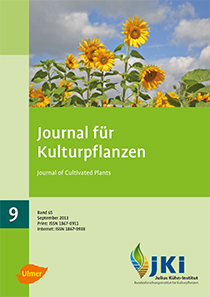Potential of infrared thermography to detect insect stages and defects in young trees
DOI:
https://doi.org/10.5073/JfK.2013.09.01Keywords:
Infrared thermography, non-destructive testing, Anoplophora chinensis, wood boring insectAbstract
Living stages of the quarantine pest Anoplophora chinensis Forster, the so called Citrus Longhorned Beetle (CLB), have been detected repeatedly during import inspections of young trees in several European Union member states. CLB infested plants show almost no external symptoms for identification by visual inspection. Therefore, according to the European Union plant health legislation (EU-Commission-Implementing Decision 2012/138/EG), destructive sampling of the plants at random is required. Infrared thermography has been assessed as alternative, non-destructive testing method. Due to the quarantine status of CLB, the native goat moth, Cossus cossus L., was used as surrogate for the studies. Three types of thermography cameras have been tested using standardized wooden samples during two long-term measurements. Neither passive nor active thermographic methods were able to visualize enough differences in temperatures to detect larvae, boreholes or boredust inside of wooden samples. Therefore infrared thermography with its currently available technology seems to be no appropriate technique for detecting insect stages or defects in young trees.
DOI: 10.5073/JfK.2013.09.01, https://doi.org/10.5073/JfK.2013.09.01
Published
Issue
Section
License
The content of the journal is licensed under the Creative Commons Attribution 4.0 License. Any user is free to share and adapt (remix, transform, build upon) the content as long as the original publication is attributed (authors, title, year, journal, issue, pages).
The copyright of the published work remains with the authors. The authors grant the Journal of Cultivated Plants, the Julius Kühn-Institut and the OpenAgrar repository the non-exclusive right to distribute and exploit the work.







